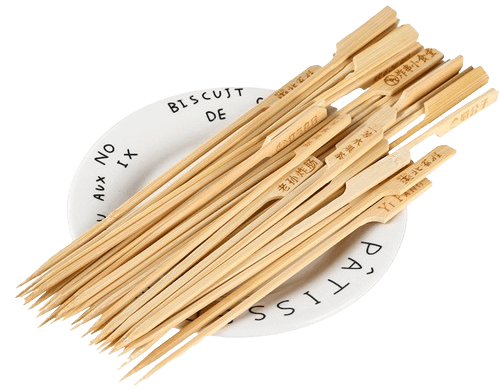Key Takeaways
| Aspect | Details |
|---|---|
| Historical Origin | Originated in ancient China during the Shang Dynasty (around 1200 BC). |
| Cultural Significance | Symbolizes balance between heaven and earth; used in rituals and as a symbol of quick marriage and fertility. |
| Materials Used | Initially bamboo, now includes wood, plastic, and metals. |
| Global Spread | Adopted in other Asian cultures such as Japan, Korea, and Vietnam due to their convenience and versatility. |
| Modern Innovations | Ergonomic designs and eco-friendly materials like those developed by Ecostix Global highlight modern adaptations. |
I. Introduction
Chopsticks are not merely utensils for eating but are imbued with profound cultural and historical significance, especially within Chinese society. This exploration delves into their origins, cultural implications, and the etiquette surrounding their use, underscoring their role beyond simple tableware.
II. The Origin and Evolution of Chopsticks
Chopsticks, or “kuaizi” in Mandarin, trace their roots back over 3,000 years to the Shang Dynasty. Initially used as cooking tools, their use as eating utensils began during the Han Dynasty. The evolution of chopsticks from rudimentary twigs to polished bamboo and wooden artifacts reflects China’s historical ingenuity and resourcefulness.
III. Cultural Significance of Chopsticks
In Chinese culture, chopsticks are more than tools; they are a bridge between the physical and the spiritual. They represent the philosophical concept of harmony, balancing the round (heaven) and square (earth) ends. This duality is deeply entrenched in Confucian ideals, which emphasize harmony and balance, core tenets reflected in the simple, yet profound act of eating with chopsticks. Additionally, their use during traditional festivals and ceremonies, such as weddings, where they symbolize “speedy marriage and fertility,” showcases their cultural depth.
IV. Practical Insights: How to Use Chopsticks
Using chopsticks effectively requires technique and practice. Here’s a brief guide:
- Hold the first chopstick steady with the base resting at the crook of the thumb and balancing on the ring finger.
- Place the second chopstick between the tip of the thumb and the middle and index fingers, similar to holding a pen.
- Maneuver the top chopstick to grasp food while the bottom one remains stationary.
This method emphasizes precision, a quality revered in Chinese dining culture, reflecting the meticulous nature of Asian culinary practices.
V. Chopsticks Etiquette and Dining Customs
Proper manners and etiquette are crucial when using chopsticks, reflecting broader Chinese cultural values and norms. Here are key aspects of chopstick etiquette:
- Never stick chopsticks upright in a bowl of rice, as this resembles incense sticks used at funerals and is considered inauspicious.
- Avoid pointing chopsticks at others across the dining table, as it’s considered rude, similar to pointing a finger in many cultures.
- Do not drum on your bowl or plate with chopsticks, as this behavior is associated with begging and is seen as impolite.
- Pass food directly from your plate to another’s plate using chopsticks as a gesture of kindness and consideration, especially towards elders and guests, highlighting the communal aspect of Chinese dining.
These etiquette rules are not just about table manners but are intertwined with deep cultural respect, communal values, and social harmony.
VI. Chopsticks Around the World
While chopsticks have become a global utensil, their use and styles vary across different cultures:
- Japanese chopsticks (“Hashi”) are typically shorter than Chinese ones and taper to a fine point, reflecting the Japanese aesthetic of precision and detail.
- Korean chopsticks are often made of metal and are flat rather than rounded, which can make them challenging for beginners but they are valued for their hygienic properties.
- Vietnamese chopsticks tend to be longer and often made of lighter wood or bamboo, suited to the Vietnamese style of communal hot pots where they are used for reaching across large tables.
This diversity in chopstick design and usage reflects the unique cultural, dining, and aesthetic values of each Asian country.
VII. Modern Innovations and Variations
Innovation in chopstick design has kept pace with global sustainability trends and ergonomic needs. For instance:
- Ergonomic chopsticks have been developed to reduce stress on the fingers and hands, making them more comfortable for continuous use.
- Eco-friendly materials, such as those pioneered by Ecostix Global, include sustainably sourced bamboo and other biodegradable materials that cater to environmental consciousness.
- Decorative and collectible chopsticks are now widespread, ranging from artistically painted to those inlaid with mother-of-pearl or adorned with cultural motifs, serving both utilitarian and aesthetic purposes.
These advancements not only cater to modern needs but also help in preserving traditional practices in a sustainable manner.
Conclusion
Chopsticks are much more than mere eating utensils. They are a testament to the rich cultural heritage and continuous evolution of Asian societies. Through the lens of chopsticks, we can explore the intricate blend of tradition, respect, and communal living that typifies much of Asian culture. At Ecostix Global, we recognize the importance of sustaining these traditions while adapting to modern environmental needs. Our bamboo chopsticks are not just tools for eating but symbols of a commitment to sustainability and cultural respect.
To discover more about our commitment to sustainable practices and to explore our innovative range of products, visit our Sustainable Practices page.



